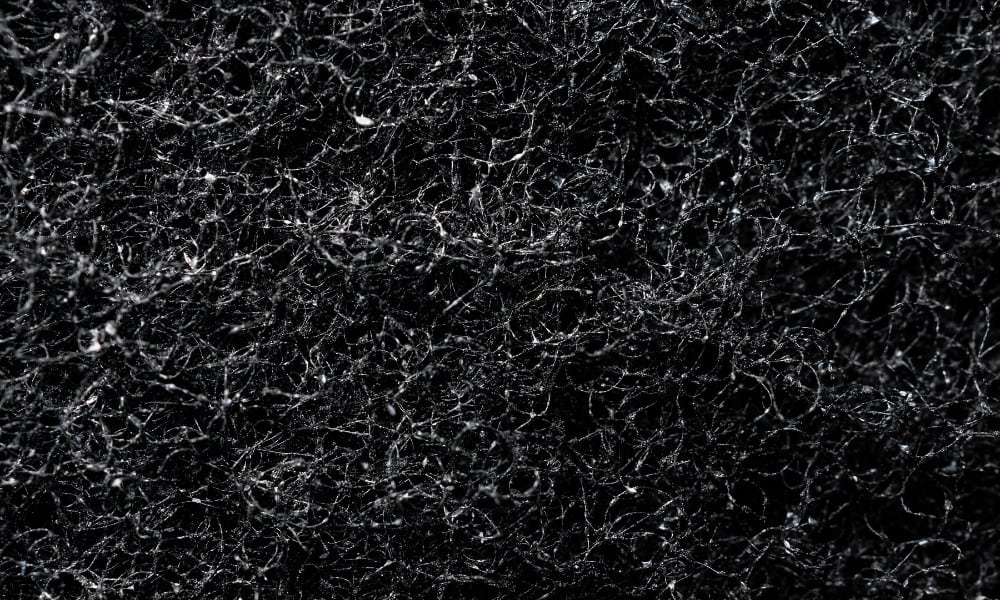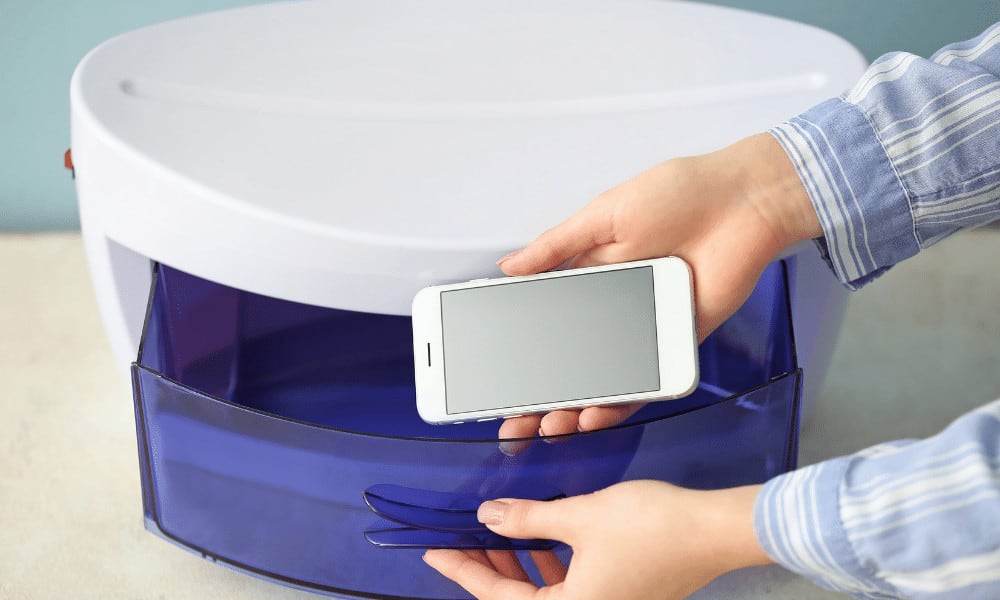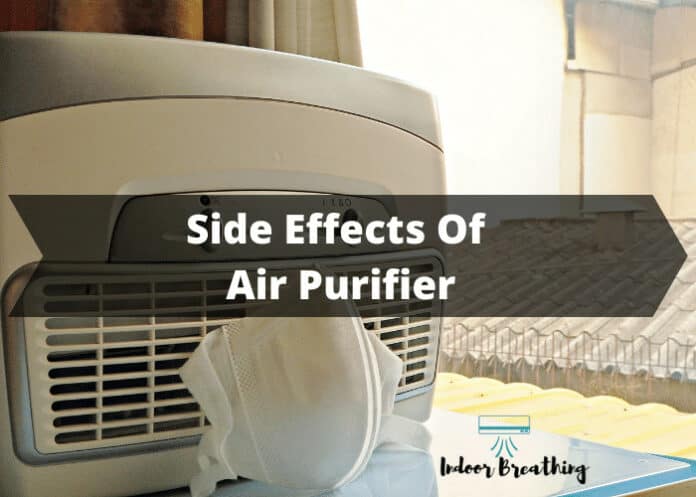The effectiveness of air purifiers relies on different factors – yet all share the same purpose. Therefore, having an air purifier has tons of benefits. You could probably go on and on about how it cleans the air, makes you breathe easily, and all that.
Similar to medicines, air purifiers are intended to keep you healthy. They work by filtering pollutants and other small particles that float in the air.
But also similar to medicines, using air purifiers can have some unintended effects on our bodies. Fortunately, not all air purifiers have side effects.
Much like medicines, air purifiers are designed to keep you healthy by filtering out pollutants and other small particles that float in the air. However, also like medicines, using air purifiers can have some unintended effects on our bodies. Fortunately, not all air purifiers have side effects. Understanding which air purifiers are safe to use and which ones you might want to avoid is crucial. This article will delve into that and more.
All it takes is knowing what air purifiers are safe to use and which you should probably stay away from. This article will discuss that and many more!
Table of Contents
How Air Purifiers Work
Air purifiers typically use filters and other technologies to clean the air. The most common types include:
- HEPA Filters: High-Efficiency Particulate Air filters capture particles as small as 0.3 microns, including dust, pollen, mold, and bacteria.
- Activated Carbon Filters: These filters absorb odors and gases, making them effective against smoke, fumes, and volatile organic compounds (VOCs).
- UV Light Purifiers: Ultraviolet light can kill or inactivate bacteria, viruses, and other microorganisms.
- Ionizers: These devices release negative ions that attach to particles, causing them to fall out of the air or stick to surfaces.
- Ozone Generators: These produce ozone, a gas that can neutralize odors and pollutants but can be harmful at high levels.
Can Air Purifiers Be Harmful?
The air that we breathe is naturally contaminated. That, along with the ongoing COVID-19 pandemic, is the reason why air purifiers have become increasingly important nowadays. Air purifiers are great for improving indoor air quality and making the entire family breathe properly. But what if you start experiencing side effects?
Side Effects Of Air Purifier
Air purifiers are designed to eliminate pollutants from the air you breathe, making them a must-have for anyone concerned about indoor air quality. Fortunately, studies have shown that harmful side effects are unlikely if you use them properly. However, not all air purifiers are created equal. Some can be beneficial to your health, while others may pose risks. The adverse effects usually depend on the type of filter used and how often they are maintained.
1. Ozone Emission
Some air purifiers, particularly ozone generators and certain types of ionizers, produce ozone as a byproduct. Ozone at ground level is a respiratory irritant and can exacerbate conditions like asthma and other respiratory issues. Prolonged exposure to high levels of ozone can lead to:
- Throat irritation
- Chest pain
- Coughing
- Shortness of breath
2. Dryness and Irritation
Air purifiers, especially those used in dry environments or in conjunction with air conditioning and heating, can reduce humidity levels, leading to:
- Dry skin
- Throat irritation
- Dry eyes
3. Noise Pollution
Some air purifiers, particularly those with powerful fans, can generate significant noise. This noise can disturb sleep or concentration, resulting in:
- Sleep disturbances
- Increased stress levels
4. Maintenance Issues
Neglecting regular maintenance and filter replacement can lead to a build-up of pollutants within the purifier, which can then be released back into the air. This can cause:
- Recirculation of pollutants
- Reduced effectiveness in air cleaning
Side Effects of HEPA Filters
High-Efficiency Particulate Air (HEPA) filters are designed to trap up to 99.97% of airborne pollutants larger than .03 microns. They are excellent for removing tiny particles floating in the air like dust, pollen, and pet dander.
These filters are particularly effective in removing tiny particles from the air, including dust, pollen, and pet dander, making them a popular choice for improving indoor air quality. However, while HEPA filters are generally safe and effective, there are some side effects and limitations that users should be aware of.
Generally, HEPA filters are safe to use. The problem is that many copycat filters have come out recently. While these filters work similarly, they don’t meet the HEPA standards. To help differentiate the real ones from fakes, they are given True HEPA.
When used correctly, True HEPA filters do not make you sick. However, it does have a few limitations:
Replacing HEPA filters can be costly – Although there are ways to make HEPA filters last longer, they still need to be replaced periodically. Some pollutants do not come off once they stick to the filters. This is why HEPA filters should not be reused. This ongoing expense can be a significant consideration for consumers.
HEPA filters are unable to trap VOCs – Another limitation HEPA filters are unable to trap VOCs and other airborne bacteria and viruses that are bigger than .03 microns. VOCs, in particular, get inhaled a lot since the cleaning and beauty products we often use contain these chemicals.
HEPA filters excel at capturing particulate matter but fall short when it comes to volatile organic compounds (VOCs). VOCs are tiny chemical particles often found in cleaning products, paints, and beauty products. Since these compounds are smaller than 0.3 microns, they easily pass through HEPA filters. As a result, users may still be exposed to these harmful chemicals despite having a HEPA filtration system in place.
Regular maintenance is needed for HEPA filters – As time passes, built-up debris may cause the HEPA filter to clog – reducing its effectiveness. HEPA filters need to be cleaned regularly to prevent this from happening quickly. Click here to learn how it’s done.
Regular maintenance is crucial for maintaining the effectiveness of HEPA filters. Over time, the accumulation of debris can clog the filter, reducing its ability to capture airborne pollutants. To prevent this and ensure optimal performance, HEPA filters need to be cleaned and replaced according to the manufacturer’s recommendations. Failure to maintain the filters can lead to decreased air quality and reduced filter lifespan.
Side Effects of Carbon Filters

With the way it’s designed, carbon filters clean the air using a bed of activated carbon. This technology helps combat VOCs released by several common household items – particularly cleaning products.
Air purifiers have become essential in maintaining indoor air quality, and among the various filtration technologies available, carbon filters are highly regarded. These filters clean the air using a bed of activated carbon, a technology effective in combating volatile organic compounds (VOCs) released by numerous household items, particularly cleaning products. Despite their benefits, carbon filters come with certain downsides that users should be aware of.
The Benefits of Carbon Filters
Activated carbon filters are popular for good reason. They excel at removing a wide range of pollutants, including various chemicals, smoke, and odorous compounds. This makes them especially beneficial for individuals with asthma or other respiratory conditions, as the filters can adsorb pollutants that may exacerbate these conditions.
The Downsides of Carbon Filters
However, the use of carbon filters is not without its challenges. The most significant drawbacks include:
Ineffectiveness Against Smaller Particles
While activated carbon filters are excellent at trapping many pollutants, they are less effective at filtering smaller particulate matter such as dust, pet dander, and other common allergens. To address this limitation, it is advisable to use a carbon filter in conjunction with a more traditional HEPA (High-Efficiency Particulate Air) filter. This combination can maximize the air purifier’s overall capability, ensuring a broader spectrum of pollutants is captured.
Potential for Pollutant Re-release
Another critical issue with carbon filters is their adsorptive nature, which can pose a risk if not properly maintained. Over time, the pollutants trapped by the carbon filter accumulate. Once the filter reaches its capacity, it can begin to re-release previously adsorbed pollutants back into the air. This re-release can potentially degrade indoor air quality, negating the benefits of using the air purifier in the first place.
Fortunately, carbon filters are washable, which helps mitigate this issue. Regular maintenance, including washing the filter as per the manufacturer’s instructions, can prevent the buildup of pollutants and ensure the filter remains effective. This not only extends the life of the filter but also maintains the air purifier’s performance without the need for constant replacements.
There’s a good reason why activated carbon filters are typically used in air purifiers; activated carbon effectively removes pollutants such as various chemicals, smoke, and odorous compounds. In addition, people who have asthma can benefit a lot from carbon filters because of their ability to adsorb pollutants.
Unfortunately, there are downsides to using carbon filters. The most significant ones are:
Carbon filters are not that effective against smaller particles. Though activated carbon filters are excellent for trapping a wide range of pollutants, it doesn’t work very well in filtering particulate matter like dust, pet dander, and other allergens. Using a carbon filter with a more traditional HEPA filter should maximize its capability.
Its adsorptive nature can also make carbon filters dangerous – When it’s not maintained properly, the pollutants trapped by the carbon filter will continue to accumulate. Once the carbon filter becomes too full, it will re-release previously-adsorbed pollutants into the air. It’s good that carbon filters are washable, so there’s no need to keep replacing them.
Side Effects of Ionizers

The use of air purifiers with ionizers rose to popularity mainly due to their energy- and cost-efficiency. In addition, ionizers clean the air by producing negative ions that aid in collecting airborne contaminants. Eventually, these contaminants become heavy and form dirty surfaces around the air purifier – making them easier to see and clean.
A 2018 study highlighted several benefits of negative ions, including keeping the air fresh, reducing odors, inhibiting viruses and bacteria, relieving stress, improving sleep quality, enhancing immune function, and boosting mood. Despite these advantages, using ionizers comes with several notable drawbacks.
Unfortunately, using ionizers has its drawbacks:
Ionizers can only clean the air temporarily – Ionizers can only clean the air temporarily. The pollutants attracted by negative ions fall to the ground but are not absorbed or destroyed. This results in a buildup of dirt around the air purifier and other nearby surfaces, including walls and furniture. This accumulation can make areas look dirty and require frequent cleaning. Additionally, these settled particles can be easily reintroduced into the air with a slight gust of wind or any disturbance, reducing the overall effectiveness of the air purifier.
Ionizers emit ozone which is harmful to the lungs – One of the significant concerns with ionizers is their emission of ozone, a byproduct that can be harmful to the lungs. While ionizers are not designed to be ozone generators, they do release small amounts of ozone into the air. Prolonged exposure to high levels of ozone can weaken lung function and lead to symptoms such as chest pain, shortness of breath, and coughing. The risk is particularly high when ionizers are used in confined spaces, where the concentration of ozone can increase to potentially dangerous levels.
In conclusion, while ionizers off
Side Effects of UV Sanitizers

Ultraviolet (UV) technology for air purifiers has gained traction lately due to its ability to eliminate harmful airborne contaminants like germs, viruses, mold, and bacteria. UV sanitizers not only filter these microorganisms; it destroys them as well.
UV air purifiers work by filtering air it captures through an internal chamber. It is then exposed to a short-wave UV-C light that inactivates pathogens and other microorganisms.
As good as UV sanitizers are, some negatives come with them:
Some UV sanitizers produce ozone – One of the primary concerns with UV sanitizers is the production of ozone. Inhaling ozone in large amounts is very harmful, especially to the lungs. Exposure to high levels of ozone can cause respiratory issues, triggering asthma attacks and other breathing problems. Individuals with existing respiratory conditions are particularly vulnerable. This risk necessitates caution when using UV sanitizers, especially in poorly ventilated or confined spaces.
UV sanitizers are not good standalone filters – While UV sanitizers are effective at neutralizing microorganisms, they fall short in other areas of air purification. Specifically, UV sanitizers are not designed to remove volatile organic compounds (VOCs) or particulate matter such as dust, pollen, and smoke. This limitation means that relying solely on a UV sanitizer will not provide comprehensive air purification. To achieve optimal air quality, UV sanitizers are often best used in conjunction with HEPA (High-Efficiency Particulate Air) and activated carbon filters. HEPA filters excel at capturing particulate matter, while activated carbon filters are effective at removing VOCs and odors.
5 Major Advantages to Using an Air Purifier
This article has been mainly about the negative effects of certain air purifiers. But how about its major benefits? Here are five of them:
- Air purifiers decrease the risk of airborne infections
- Air purifiers help prevent certain allergies
- Air purifiers remove harmful chemicals indoors
- Air purifiers reduce unpleasant odors
- Air purifiers improve sleep quality
People Also Ask
Do air purifiers do more harm than good?
When used in confined spaces, some air purifiers can do more harm than good – specifically those that emit ozone. But overall, the positives of air purifiers outweigh the negatives.
Air purifiers have become increasingly popular as people seek to improve indoor air quality and reduce pollutants that can cause allergies and respiratory issues. While they offer many benefits, it’s important to understand the potential side effects and risks associated with their use, particularly in confined spaces. In some cases, certain types of air purifiers can do more harm than good.
The Benefits of Air Purifiers
Air purifiers are designed to remove contaminants from the air, including dust, pollen, pet dander, smoke, and other harmful particles. Many air purifiers use High-Efficiency Particulate Air (HEPA) filters, which are highly effective at capturing particles as small as 0.3 microns. Other air purifiers may use activated carbon filters to remove odors and gaseous pollutants.
The benefits of using air purifiers include:
- Improved Air Quality: By removing harmful particles, air purifiers can significantly improve the quality of indoor air, making it safer to breathe.
- Allergy Relief: For people with allergies, air purifiers can help reduce exposure to allergens such as pollen, dust mites, and pet dander, alleviating symptoms.
- Reduced Asthma Triggers: Cleaner air can help reduce asthma attacks by removing irritants that can trigger asthma symptoms.
- Elimination of Odors: Air purifiers with activated carbon filters can effectively eliminate unpleasant odors from cooking, pets, and smoke.
Choosing the Right Air Purifier
To minimize potential side effects and maximize the benefits of using an air purifier, consider the following tips:
- Avoid Ozone-Generating Models: Opt for air purifiers that do not produce ozone. Look for models with HEPA and activated carbon filters.
- Check CADR Ratings: The Clean Air Delivery Rate (CADR) indicates the effectiveness of an air purifier in removing specific pollutants. Choose a model with a high CADR for the types of pollutants you want to remove.
- Consider Room Size: Select an air purifier that is appropriate for the size of the room where it will be used. Using an undersized air purifier in a large room will be less effective.
- Ensure Proper Ventilation: Use air purifiers in well-ventilated spaces to prevent the buildup of pollutants and byproducts.
- Maintain the Air Purifier: Regularly clean and replace filters according to the manufacturer’s instructions to ensure optimal performance.
Can air purifiers make breathing worse?
Air purifiers are often hailed as essential devices for improving indoor air quality, especially for those suffering from allergies, asthma, or other respiratory conditions. By removing contaminants like dust, pollen, smoke, and pet dander, these devices promise cleaner air and easier breathing. However, there are instances where air purifiers can inadvertently cause breathing problems instead of alleviating them. Understanding why this happens and how to prevent it is crucial for anyone relying on these devices to enhance their indoor air environment.
Dirty or Clogged Filters: A Common Culprit
One of the most frequent reasons an air purifier might make breathing worse is a dirty or clogged filter. Air purifiers rely on filters to trap harmful particles, but over time, these filters become saturated with debris. A clogged filter can reduce the efficiency of the purifier, leading to poor air circulation and potentially recirculating contaminants back into the air.
Signs Your Filter Needs Attention
- Reduced airflow: If you notice that your air purifier is not circulating air as effectively as it used to, the filter might be clogged.
- Unpleasant odors: A dirty filter can harbor bacteria and mold, leading to foul smells and potentially harmful particles being released into the air.
- Increased allergy symptoms: If your symptoms worsen, it may indicate that your air purifier is not functioning properly due to a clogged filter.
Maintenance Tips
- Regular checks: Inspect your air purifier’s filter every month, especially if you live in an area with high levels of pollution or allergens.
- Follow manufacturer guidelines: Replace or clean the filter as recommended by the manufacturer. Some filters need to be replaced every three months, while others can be cleaned and reused.
Maintenance Requirements: Keeping Your Purifier Efficient
Beyond just the filter, air purifiers require regular maintenance to perform optimally. Neglecting maintenance can lead to the device malfunctioning or becoming a source of pollution itself.
Essential Maintenance Tasks
- Cleaning the exterior: Dust and debris can accumulate on the outside of the air purifier, potentially being drawn into the device and clogging the filter.
- Checking for malfunctions: Ensure that the fan and other components are working correctly. A malfunctioning part can reduce efficiency and increase noise levels, which can be irritating and affect breathing comfort.
- Humidity control: In humid environments, air purifiers can sometimes promote mold growth if not properly maintained. Using a dehumidifier in conjunction with your air purifier can help prevent this.
Do air purifiers have radiation?
Air purifiers emit a small amount of electromagnetic field (EMF) radiation. Fortunately, the amount of radiation it gives off is totally safe. There is currently zero evidence proving that EMFs are harmful.
Air purifiers have become increasingly popular as people seek cleaner, healthier air in their homes and workplaces. These devices are known for their ability to remove pollutants, allergens, and other harmful particles from the air, making breathing easier and improving overall health. However, a question that often arises is whether air purifiers emit radiation and if so, whether this radiation is harmful.
Understanding Radiation from Air Purifiers
Air purifiers, like many electronic devices, emit a small amount of electromagnetic field (EMF) radiation. EMF radiation is a type of low-energy radiation that comes from various sources including power lines, household appliances, and electronic devices. It is important to understand that the EMF radiation emitted by air purifiers is significantly lower than what is considered harmful.
Types of EMF Radiation
EMF radiation is generally categorized into two types:
- Ionizing Radiation: This type of radiation has enough energy to remove tightly bound electrons from atoms, creating ions. Examples include X-rays and gamma rays. Ionizing radiation is known to be harmful and can cause damage to living tissues.
- Non-Ionizing Radiation: This is a low-energy radiation that does not have enough energy to ionize atoms or molecules. Examples include radio waves, microwaves, and the EMF radiation from electronic devices like air purifiers.
Air purifiers emit non-ionizing radiation, which is generally considered safe for human exposure.
Safety of EMF Radiation from Air Purifiers
Numerous studies and regulatory agencies have assessed the safety of non-ionizing EMF radiation. The consensus is that the levels of EMF radiation emitted by household appliances, including air purifiers, are far below the thresholds that could potentially cause harm. For instance, the World Health Organization (WHO) and other health bodies have established guidelines that limit the amount of EMF radiation exposure. Air purifiers comply with these guidelines, ensuring that the emitted radiation is well within safe limits.
Moreover, the amount of EMF radiation from an air purifier is comparable to or even less than that emitted by common household devices like televisions, computers, and refrigerators. The radiation diminishes rapidly with distance, so maintaining a reasonable distance from the device further reduces exposure.
Conclusion
Regardless of what air purifier you’re thinking of getting, they all have pros and cons. Your due diligence should help determine which air purifier makes the most sense.
Air purifiers have become increasingly popular as concerns about indoor air quality rise. These devices can significantly improve the air you breathe by removing pollutants, allergens, and other harmful particles. However, like any technology, air purifiers come with their own set of advantages and disadvantages. Understanding these can help you make an informed decision about which air purifier is right for you.
Benefits of Air Purifiers
- Improved Air Quality: Air purifiers can effectively remove dust, pollen, pet dander, and smoke particles, leading to cleaner air and a healthier living environment.
- Allergy Relief: By reducing the presence of allergens, air purifiers can alleviate symptoms for allergy sufferers.
- Odor Elimination: Many air purifiers can also help remove unpleasant odors from your home, including those from pets, cooking, and tobacco smoke.
- Reduced Asthma Triggers: Cleaner air can help reduce the frequency and severity of asthma attacks.
- Enhanced Sleep Quality: Better air quality can contribute to a more restful sleep by reducing nighttime respiratory issues.
Potential Side Effects and Drawbacks
- Ozone Emission: Some air purifiers, particularly those that use ozone generators or ionizers, can produce ozone as a byproduct, which can be harmful to health.
- Maintenance Costs: Air purifiers require regular maintenance, including filter replacements, which can add to the ongoing cost.
- Noise Levels: Depending on the model, some air purifiers can be quite noisy, which may be disruptive in certain settings.
- Energy Consumption: Continuous operation of air purifiers can lead to increased energy use and higher electricity bills.
- Limited Coverage Area: Some air purifiers are only effective in small spaces and may not provide adequate purification for larger areas.


